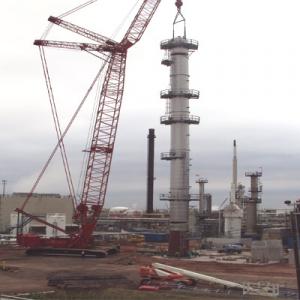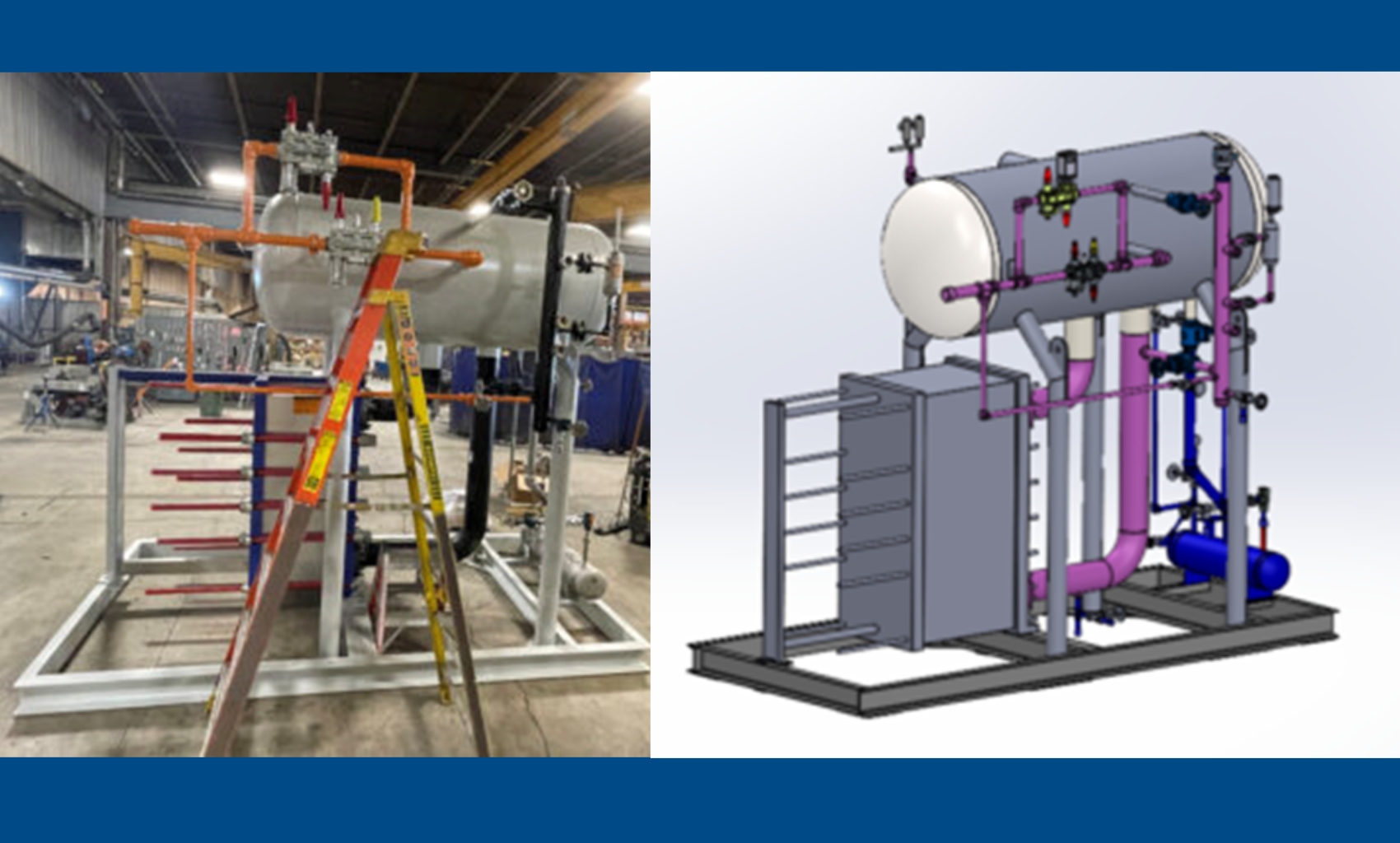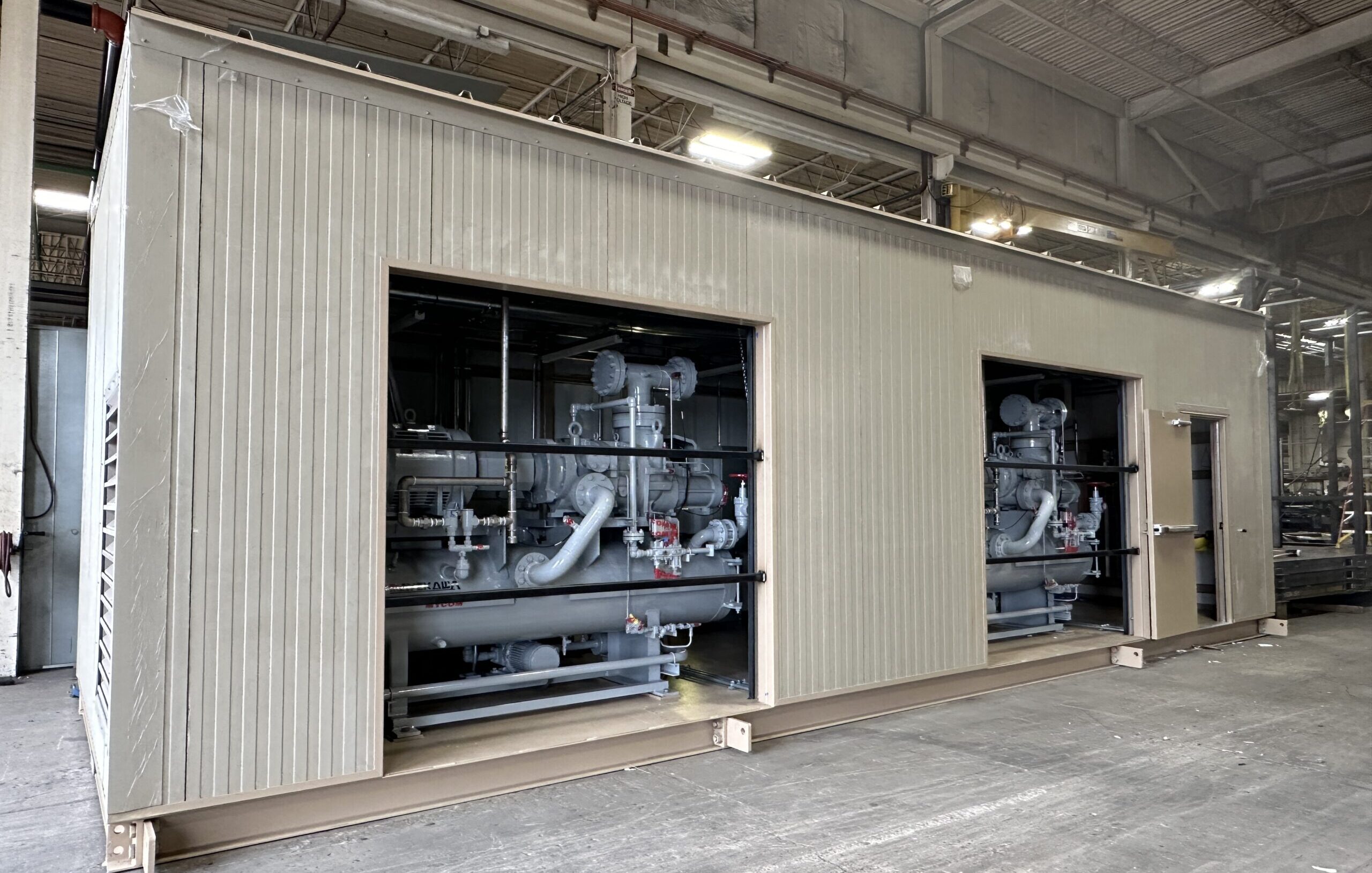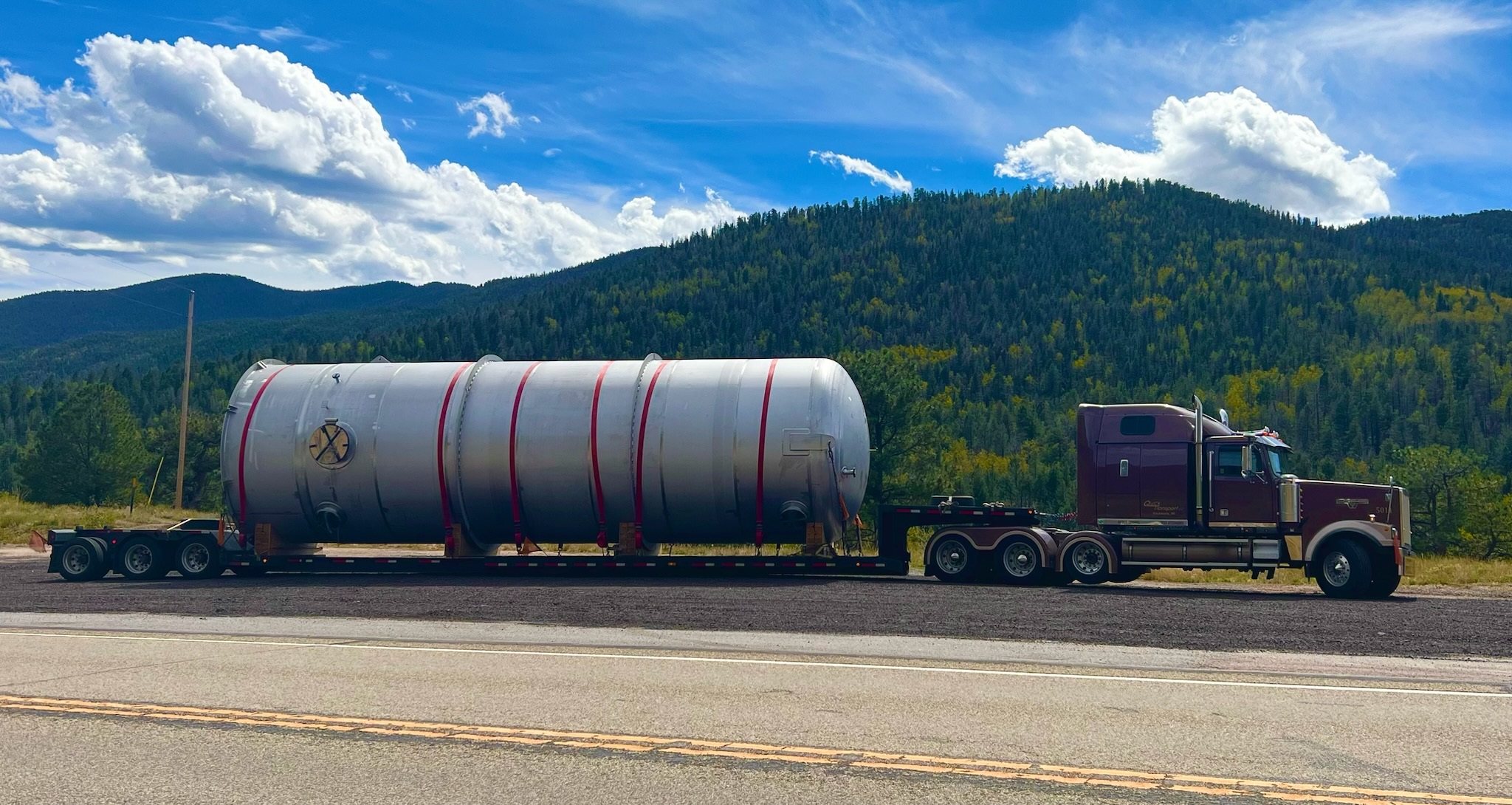Two years ago when Murphy Oil Corporation in Superior, Wisconsin, was searching for a fabricator to manufacture a pressure vessel, they were pleasantly surprised to find Thermatech Ltd., a sister company of Bassett. Murphy Oil needed a vessel to meet new federal regulations requiring refineries to reduce the benzene content in gasoline from about three percent to 0.62 percent.
This project was different from other projects Thermatech had done because of the size of the carbon steel vessel, which measured 8 feet in diameter and 220 feet long. According to Dave Podratz at Murphy Oil, the vessel is one of the tallest distillation columns at Murphy Oil in Superior and by far the largest one the Superior Refinery has purchased in the last 30 to 40 years.
After receiving proposals from numerous fabricators, Thermatech was awarded the project based on price and ability to deliver faster than anybody else. Thermatech had never built a vessel this size before, so it was a challenge they were eager to take on. .
Don Bredbeck, chief engineer at Thermatech, didn’t hesitate for a minute. Bredbeck worked in the pressure vessel industry near Houston for 28 years before joining Thermatech in 2008. Projects of this magnitude were second nature to him.
“No one in Wisconsin is used to building and moving a vessel that big. Most people didn’t think it could be done in one piece, but I knew we could do it,” claimed Bredbeck. “We received the purchase order on April 6 and had the tower ready to ship on October 1.”
Murphy Oil hired Burns & McDonnell, a full-service engineering, construction, and consulting solutions firm headquartered in Kansas City, Missouri, to oversee the project. Dan Eliason, construction manager at Burns & McDonnell, worked directly with Bredbeck on the project and visited Thermatech twice during the project.
“Don was personally involved in every decision. He really stayed on top of the work, and in fact, he even worked ahead of schedule,” said Eliason.
According to Bredbeck, once the order was received drawings and calculations were done in-house, materials brought in-house, and the fabrication process began. Thermatech used traditional vessel building techniques that included welding individual pieces together to form the vessel shell, adding nozzles and attachments to the vessel, building access ladders and platforms to go on the vessel, painting and installing internal components to separate the benzene.
With the help of a specially built truck and state troopers, it took two days to transport the vessel, weighing over 100 tons.
Based on the success of the first project, Thermatech is currently working on phase two, which is scheduled for completion in October 2011.
“We were very impressed with the work. They did a great job and certainly met our expectations,” said Podratz. Podratz also noted that he was pleased to tell the governor that this large vessel was built in Wisconsin when the governor recently visited their Superior facility.
Thermatech is always taking on new challenges and it’s all in a day’s work for Bredbeck who stated, “We had to do the first big one and prove to everybody that it was easy. And now, we’re in the big vessel business.”




